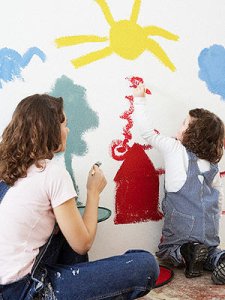I came across this rather intense article on Homeschooling, by Matt Walsh, a blogger, writer and professional sayer of truths as his FB page says. I read Matt’s entire article and found answers to many questions I have had on homeschooling.
I stay in Mumbai, India where going to a public school is a very significant part of our educational and social system. Till about 10 years ago, a good public school typically meant going to a convent and putting your kids in the same class as 65-75 other kids. Yes, unbelievable as it may sound, our third and fourth grade students do share their rooms with so many other kids.
Today, the parents who can afford it have the choice of private schooling but the fees are incredibly high and are no comparison to the convent schools. In the process, several large convents which focus on providing quality education to large numbers are taking in students from lower rungs of the society, while the children of the higher rungs get into private schools.
As a mother, I have often wondered what a parent is to do if he cannot afford the expensive private schooling and does not really want to put his / her child in the herd. Can homeschooling be an option to us here in India?
While we are lucky to have some really good teachers in our public schools, the fact remains that our overall education system is highly focused on rote learning and completing the syllabus. So expecting the teacher to pay attention to each student and enable them to grow as individuals seems like asking too much from the teachers.
My grouse is not even with the fact that the teachers do not have time for the individual study focus, my concern is how will my child learn values, how will he learn to appreciate the finer things in life, how will he learn how much of a difference a good teacher can actually make to his life, if he never really interacts with his teachers on a one on one level. If the child is always going to be one in the crowd, the only time my child will catch the teacher’s eye is if he is really brilliant or if he is really doing pathetic in class. Those are the only sets that the teacher will remember. An average child who seems to be chugging along, but could do brilliantly at something – given a little push by an encouraging teacher, will merely exist.
So can homeschooling, maybe in parts help, in the Indian scenario? Can parents take the onus of some part of the learning that we are expecting the children to do in school? Maybe we can help them explore the artistic, creative side of their personalities that get completely ignored in our highly competitive schools. Indian schools, convent and private, are all highly competitive, and while art and talent is encouraged at the lower levels; as students grow up, it falls by the wayside as parents and teachers direct the student’s focus towards academics.
Over the years, especially in India, it is easy to meet individuals who are toppers in their academic world and do extremely well at the workplace, but these individuals are uni-dimensional. They lack the facets that makes a person interesting, their thinking habits are linear and they look down upon creative pursuits as a waste of time.
It is my strong belief that if we as parents can inculcate a love for arts and crafts, for artistic or functional skills in children in their early years when we and they have the time, they will grow up to be well rounded individuals. These individuals tend to be more tolerant and are open to looking at and solving problems in new ways. You see, in creative spaces there is no wrong way to do something, this attitude leads to experimentation and exploring that can often be lost to those who shut out the creative activities from their life.
– Donut Art & Craft Kits
Yes, time to include some homeschooling in India does seem to have arrived.
 Drawing has creative, expressive and educational value; it remains fundamental to translating and analysing the world.
Drawing has creative, expressive and educational value; it remains fundamental to translating and analysing the world.